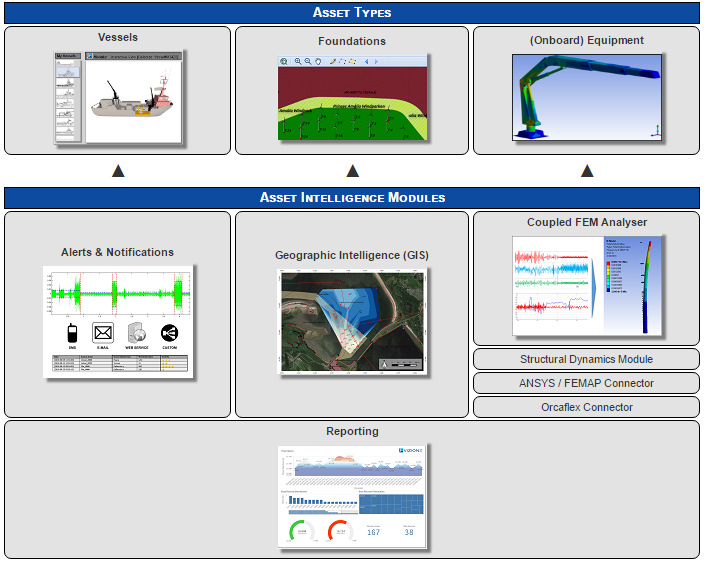Do you know what the sexiest job of the 21st century is according to the 2012 Harvard business review? Data scientist apparently. This is actually not so surprising when you look at how data is more and more becoming an integral part of society and business. Talented companies and people that know how to effectively exploit data are more sought after but unfortunately, are also in short supply. Every business industry tries to leverage available data to optimize their core processes and be able to better connect to their clients.
A good example is the advancement of BIM (Building Information Model) in the construction and real estate industry. BIM enables and utilizes sensors and manual input to keep track of all sorts of events in buildings coupled to the 3D model of that building. This allows the facility manager to monitor an array of aspects such as people in the building, energy usage but also the state of equipment. This real time information is used to optimize many processes within the building which leads to sizable cost reductions and other economic benefits for the building owner.
Would the same availability and easy access to data be useful in the offshore industry and do such solutions already exist? In short, is there an internet of offshore things?
The internet of offshore things
Like all industries, the offshore industry uses all sorts of information collection, monitoring and management systems to improve aspects such as operational efficiency, safety of personnel and structural integrity of assets.
Larger oil & gas platforms are equipped with sensors providing information on the structural integrity of the platform. These are often expensive instruments that can be used for only one type of data measurement, such as strain or movement in a structure. Another example are the warning measurement systems found on offshore loading systems. Other means of data measurement are available on these loading systems but are mainly used to provide ships moored to the loader with information.
For offshore vessels, AIS systems (Automatic Identification System) provide a valuable data source for vessel identification and location.
On the other end of the spectrum, there are buoys capable of collecting massive amounts of data that is than locally stored. More recently seen are vessel motion monitoring systems that are usually equipped with a six degree of freedom Motion Reference Units. Those can for example provide the skipper of a crew transfer vessel to better monitor the behaviour of the ship and the impact that behaviour has on the crew.
Useful data in the offshore industry
But what makes data really useful? That is when you can act on it. The examples shown above generally either directly use the acquired data to inform personnel on site, or store the data so that it can be analysed months later to identify patterns or review asset performance. Acquired information is often only utilized to a small extend and for only one very specific purpose, while the same data set could be exploited to benefit multiple involved parties in different ways at different stages of a project. What if you could correlate different data streams and utilize them for domain specific analysis in real-time for:
- Owners and operators:
- operational information on the fleet performance and working conditions for the personnel on board
- predictive maintenance of vessel and equipment based on the usage and the performance monitoring data
- Clients and Developers: insight in the utilization of the used vessels or offshore assets
- Designers: continuously collected performance data from the operational environment translated into potential design optimizations for efficiency and maintenance
To illustrate the potential, let us look at an example. Imagine a motion sensor placed on every boat in a fleet of crew transfer vessels. The logged motion data is sent real time to the skipper of the vessel, who can then make decisions based on that information to make sure the workability conditions are optimal. The same information can simultaneously be sent to the operator of the vessels via satellite, who uses the GPS data to track the vessel fleet and the conditions under which it operates (e.g. heave) and optimize their operations by adapting the work schedule. Finally, the data is then processed and put through FEM analysis to check the state of equipment on board by analysing changing modal shapes and dynamic behaviour over time. This allows for targeted (preventive) repairs that reduce overall cost and optimize maintenance schedules. The general condition of vessels and equipment becomes apparent through a continued data collection and analysis, and can be used by the vessel builders to improve on the next generation.
|
Insights on demand We at VizionZ provide a way to fulfil these information needs by combining our skills in Data Analytics and Finite Element Analysis with a modular monitoring system. In the first place, a combination of different sensor options can be installed in this system based on client needs providing an inexpensive way to continuously collect and access the data. One such configuration is with (several) 6/9 DoF motion sensors combined with a CCTV system so that video can be linked to the motion data to achieve a better understanding of what is happening at a certain moment in time. Secondly, the collected data is processed to produce a direct insight based on the user perspective – a statistical analysis for the Operation Manager and Finite Element Model calculation for the maintenance team. These analyses are configured as layered modules enabling the client to pay only for the information he needs to act. |
|
Follow our upcoming articles in this series for the engineering challenges in designing such systems and the analyses that can be coupled to it.



